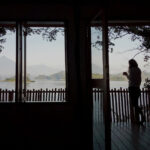Have you always fantasized about an African adventure? If so, then prepare to cruise through the jungle and go gorilla trekking. One of the most well-known destinations, a safari in Uganda will surely not disappoint. Not only do you get to see wondrous animals, you also have the chance to take in the breath-taking natural scenery. The beautiful Savannah, Lakes, and Rivers are definitely a sight to see.
One of the best experiential tours in Uganda should be gorilla safaris are too interesting to track and watch due to their way of life and how they associate with one another in their groups. Before going for a gorilla safari, it’s advisable to make arrangements with local operators within Uganda to avoid embarrassment and shortages resulting from quick arrangements. On addition to gorilla tracking, Lake Mutanda which is an adjacent lake to Bwindi is ideal for honey moon holidays.
Uganda has got an approximation of about 480 mountain gorillas located in her two parks of Bwindi and Mgahinga with over fourteen gorilla groups distributed in the four sectors of Bwindi and one in Mgahinga. Both the parks and Lake Mutanda are located in the south west of Kampala and Uganda at large, though located deep away from Kampala, many visitors from different origins go for gorillas trekking in these parks.
Begin the day with breakfast ready for trekking, which begins at 8:00 am with a briefing from the UWA staff on how to behave with these endangered mountain Gorillas. Ensure to carry along with you rain jacket, drinking water, snacks, jungle boots. The guides will lead you inside the beautiful ecosystem to see the shy Primates for a group you have been booked for. Do not forget to take your lunch boxes and all the necessary gear to track the rare Mountain Gorilla, perhaps one of the most exciting wildlife experiences on earth. The tracking may take between 2 and 6 hours but it’s well worth the effort. Dinner and overnight
Lake Mutanda is a small freshwater Lake in Uganda. The Lake is located in Kisoro District in south-western Uganda, approximately 20 kilometres (12 mi) north of the town of Kisoro, where the district headquarters are located. This location is approximately 454 kilometres (282 mi), by road, southwest of Kampala, Uganda’s capital and largest city. The coordinates of Lake Mutanda are: 01 14 06S, 29 40 12E (Latitude:-1.2350; Longitude: 29.6700). It is nestled in the foothills of the Virunga Mountain Range, at an altitude of 1,800 metres (5,900 ft.). The three volcanoes within the range that is partly located in Uganda, namely: Mount Muhabura, Mount Sabyinyo and Mount Gahinga, can be viewed from Lake Mutanda. There are several islands in the lake.
The lake is drained by the Rutshuru River, which flows northward to Lake Edward. The environment on the islands within the Lake and the surrounding countryside includes lakeside forests and wetland habitats that provide a haven for the endangered mountain gorilla. In addition to the mountain gorilla and golden monkey in the nearby Mgahinga Gorilla National Park, the Lakeside environment accommodates a variety of animal and plant species, unique to this area. Bird species include kingfisher birds, kites, ibis and Uganda’s national bird, the crested crane. Weaver bird nests are a common site among the reeds along the Lake shore.
In addition to the abundant and varied avian species, the Lake shore supports several species of snake, chameleon, monitor lizard and frog species. There is a varied and abundant supply of insect life as well. The mammals unique to Lake Mutanda include the African clawless otter. Hippopotamus was endemic to the area, but were last sighted at Lake Mutanda in 1994.


